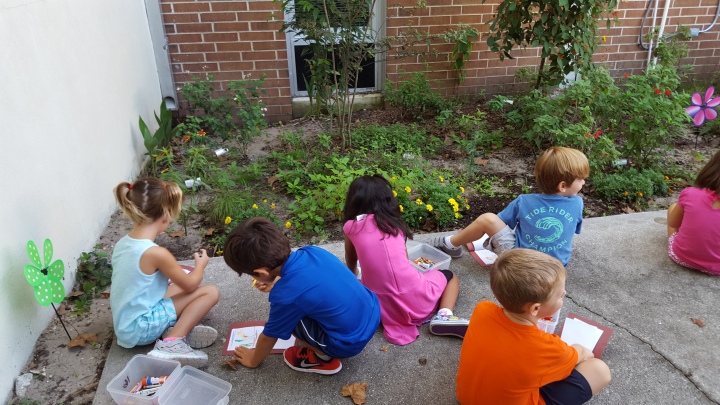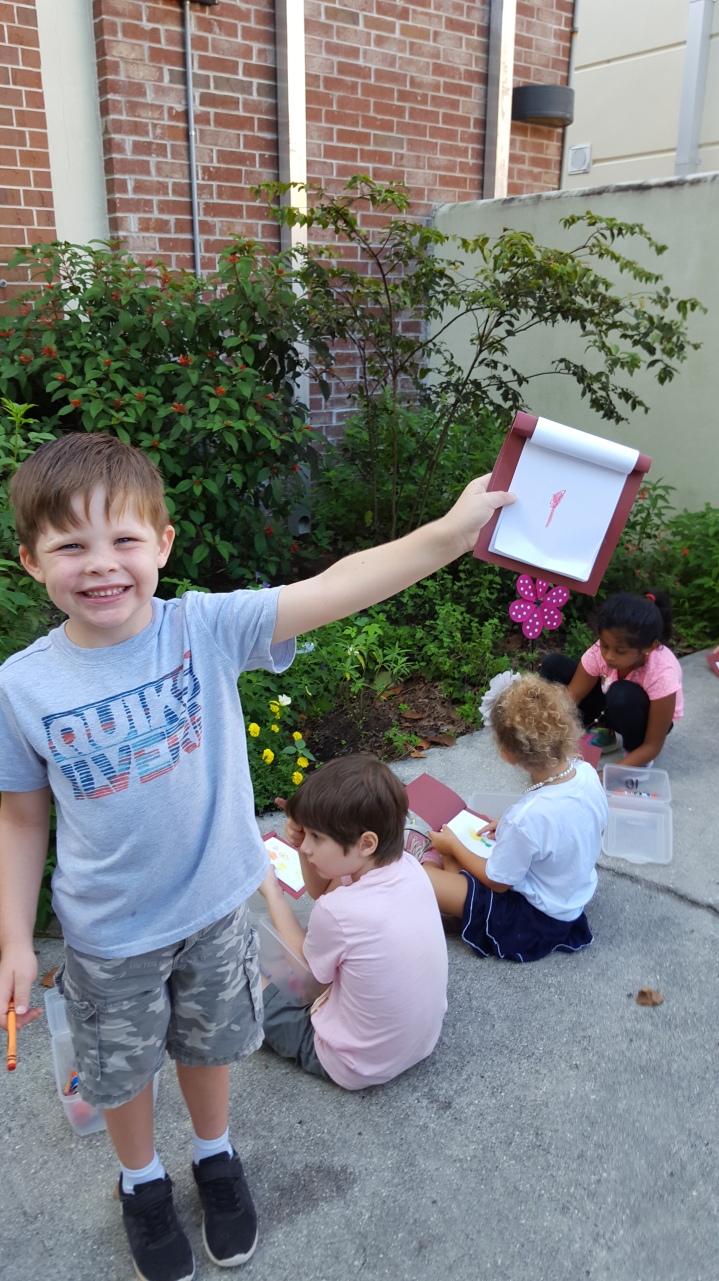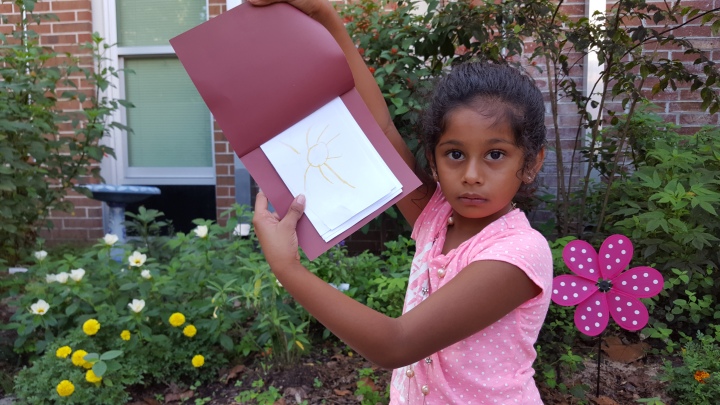This past Friday morning I had the opportunity to take a class of Kindergarteners into the Native Plants and Pollinator Garden. I was a little nervous about the noise level of 17 five-year-olds, but they did very well! They all were good listeners to the directions, and they enjoyed drawing on their field journals, touching various types of seeds, and my favorite part was they had so many questions!!! They were so engaged and curious about everything – the best type of learners! In all, it was a huge success, and several gave me hugs afterwards ❤
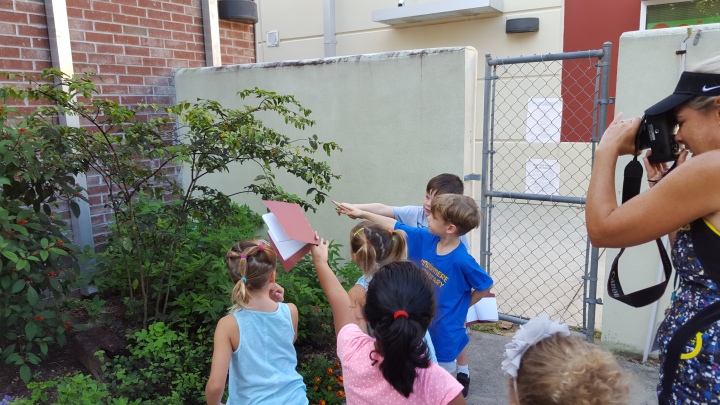
So, what factors helped make this a success instead of a spiraling disaster of chaos? Well, let’s break it down:
1) Be prepared: Their teacher prepared them well in advance about the outing. They knew that they were going to be using their 5 senses in the activity: specifically sight and touch. They all had a box of crayons ready to take with them. I met them in their room, the teacher said it was time to line up, and we walked over.
2) Consistent Hierarchy: The teacher was the leader, it was her ciriculum, and I provided additional information and learning tools. She was with the class the entire time, they had consistent rules and structure, etc. (Perhaps older students could handle this activity without their teacher, or maybe smaller groups?)
3) Sensory Interactive Tasks: I laid out several types of seeds on a cardstock, and labeled them on popsicle sticks. I tried to find visually interesting seeds of a range of textures and sizes.
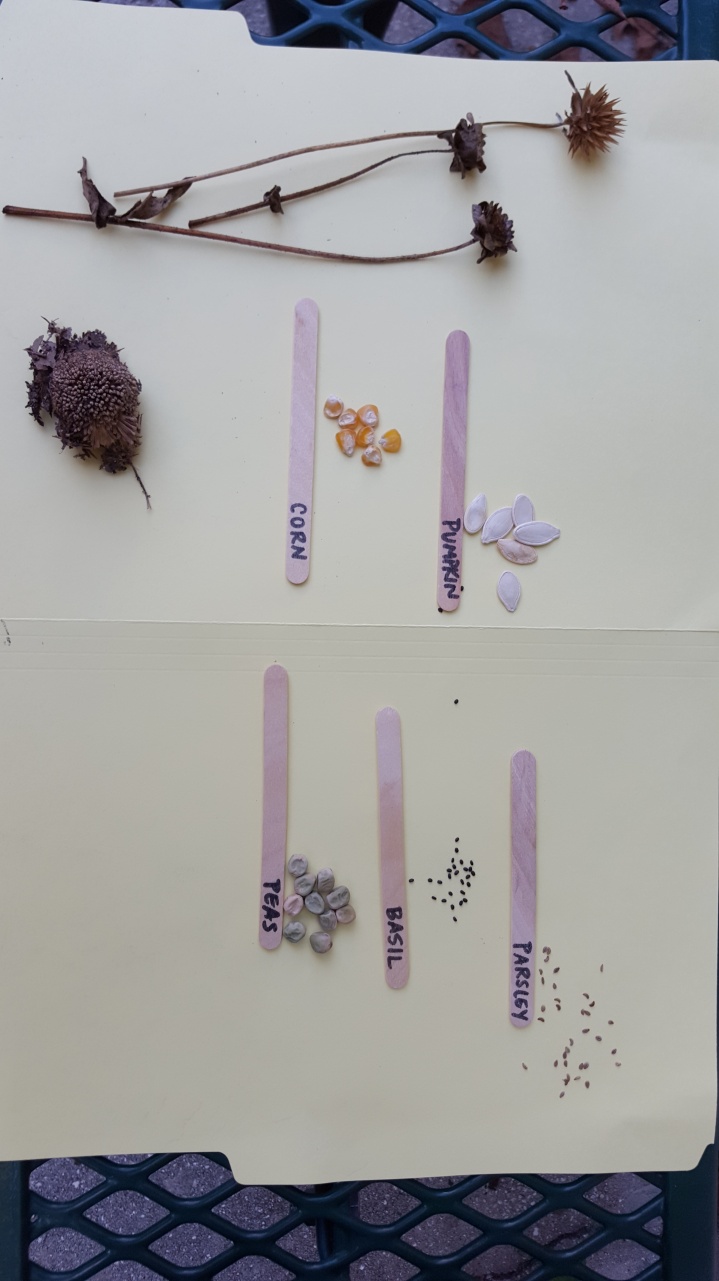
We talked about how just like people, seeds come in all shapes and sizes and colors. Like seeds, we start out small and grow everyday. Many kids loved the pumpkin seeds and Mexican Sunflower seeds. 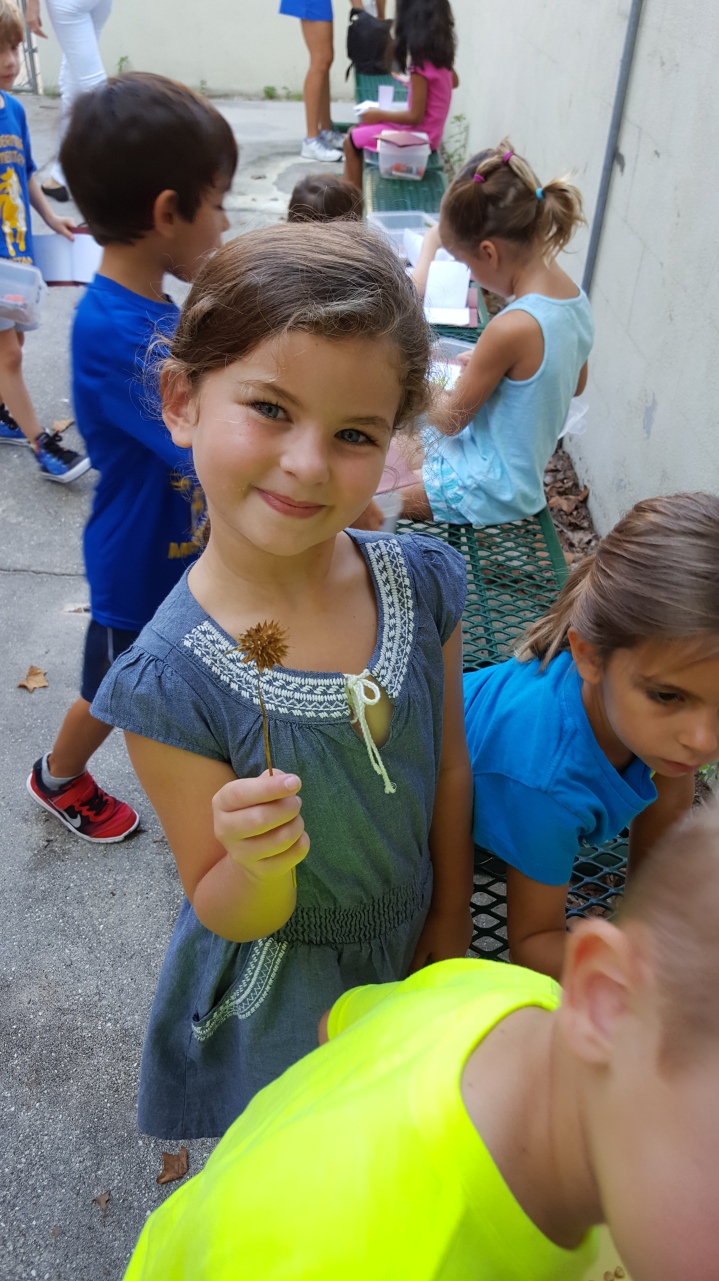
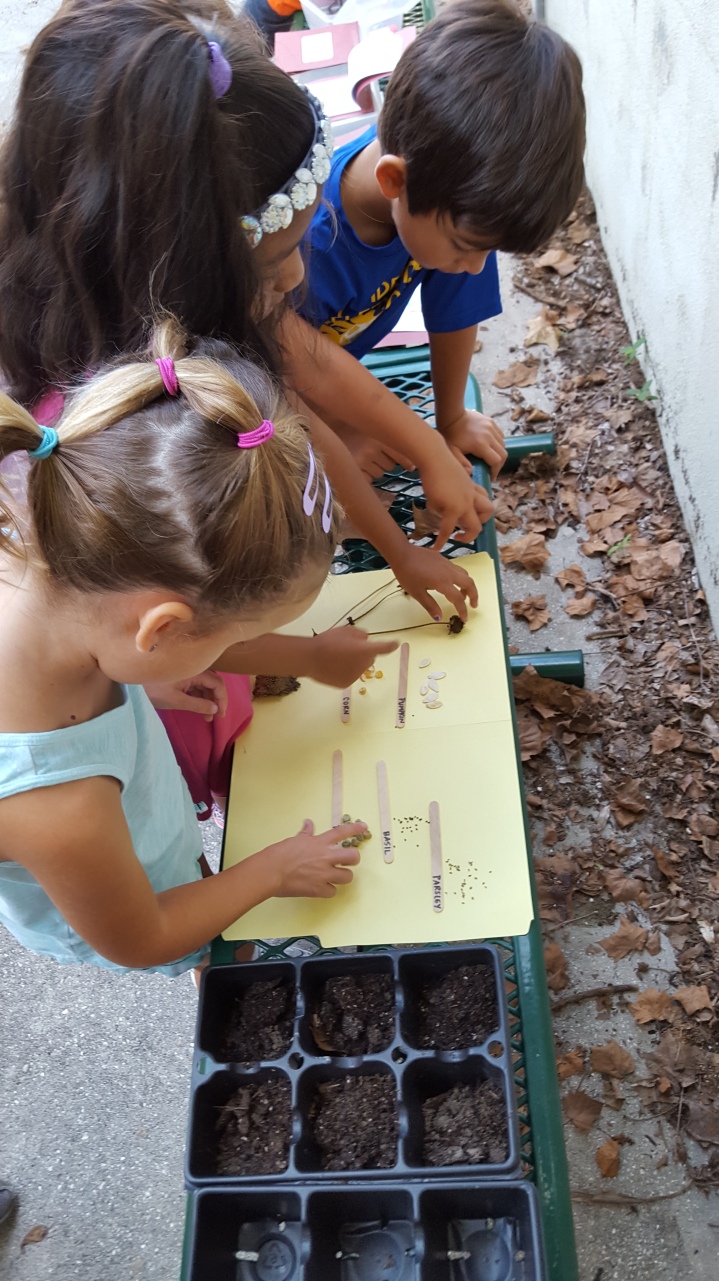
I prepped a few containers with dirt, in case we had time for planting (which we didn’t because they all worked so diligently on their Field Journal sketches!)
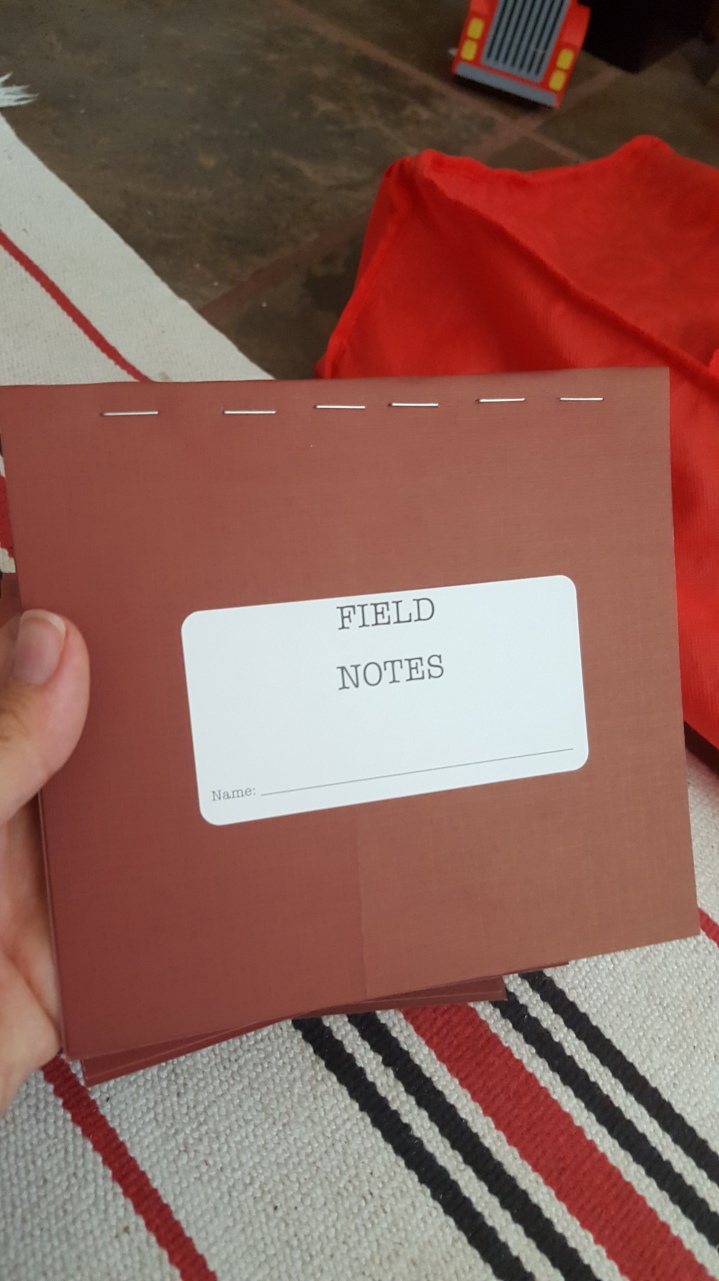
3) Create a Keepsake: These easy to make Field Journals were perfect for taking home to show to their favorite adults. I’ll post a how-to ..stay tuned.
4) Mix it up: Students worked in pairs and were directed to certain zones in the garden. Some plants (mimosa) were interactive and closed up when touched; other areas were homes for ladybugs; others filled with color and variety of heights and shapes of the plants; there were also dried leaves on the ground, colorful pinwheels, and of course the seed sensory interactive area. We could quickly redirect short attention spans to an area of discovery and engaged learning.
5) Keep it short and sweet. We limited the time to 30 minutes maximum. Everyone couldn’t wait until the next garden adventure!
